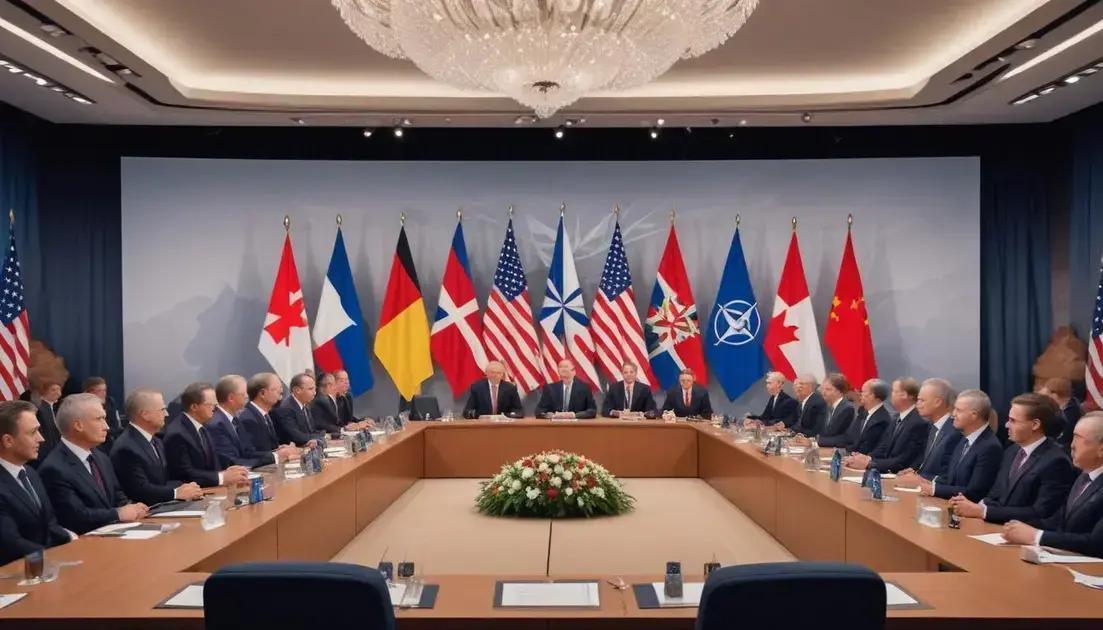
The Berlin Blockade: the first crisis of the Cold War
The Berlin Blockade was a major Cold War crisis that lasted from June 1948 to May 1949, marking a pivotal moment in U.S.-Soviet relations. The Soviets blocked ground access to West Berlin, leading to the Allies organizing the Berlin Airlift to provide essential supplies. This event showcased Western determination and resulted in deepened military alliances, notably the formation of NATO. The blockade ultimately solidified the division of Germany into East and West, significantly influencing the geopolitical landscape of post-war Europe.
Welcome to explore the Berlin Blockade, a pivotal moment in the Cold War that tested Western resolve and reshaped geopolitics forever.
Overview of the Berlin Blockade
The Berlin Blockade started in June 1948 and lasted until May 1949. This event marked one of the first major crises of the Cold War. The Soviet Union blocked all ground routes to West Berlin, isolating the city from the West.
Why did this happen? Tensions were high after World War II. The Allies divided Germany into zones. Each zone was controlled by a different power: the US, UK, France, and the USSR. The Soviet Union wanted to force the Allies out and make West Berlin entirely theirs.
In response to the blockade, Western powers launched the Berlin Airlift. This operation aimed to supply West Berliners with essential goods like food, fuel, and medicine. Planes flew in day and night, delivering 2.3 million tons of supplies.
The airlift was a huge success, helping to keep West Berlin alive during the blockade. Eventually, the Soviets lifted the blockade, but tensions remained high between East and West.
The Berlin Blockade showed the world how serious the Cold War could become. It highlighted the divide between communism and democracy. This event also set the stage for the long struggle between the East and West that followed.
Causes of the Blockade
The Causes of the Berlin Blockade are tied to post-World War II tensions. After the war, Germany was split into four zones. Each zone was controlled by different powers: the United States, the United Kingdom, France, and the Soviet Union.
As time passed, differences between these allies grew. The Soviet Union wanted complete control over East Germany and opposed the Western policies that supported West Germany’s recovery.
In 1947, the US and its allies introduced the Marshall Plan. This plan aimed to help rebuild Europe, and it worried the Soviets. They saw it as a threat to their influence in Eastern Europe.
The Soviets also didn’t like the introduction of a new currency in West Germany. The Deutsche Mark replaced the old currency, which angered the Soviets. They feared that this would strengthen West Germany economically.
On June 24, 1948, after refusing to negotiate, the Soviets blocked all ground access to West Berlin. They aimed to force the Allies out of the city entirely. This blockade was a key moment in starting the Cold War tensions.
Impact on the Cold War
The impact of the Berlin Blockade on the Cold War was significant. It marked a clear divide between East and West. Tensions escalated as the Soviet Union and Western powers showed their resolve.
This event demonstrated how serious the Cold War could become. It was one of the first major crises that pitted capitalism against communism. The blockade signaled the beginning of a long struggle for power.
Western nations realized they had to stand firm. The successful Berlin Airlift boosted morale among the Allies. It showed that they wouldn’t back down in the face of Soviet pressure.
Additionally, the blockade intensified military strategies. NATO was created in 1949 as a response to the threats posed by the USSR. This alliance aimed to protect Western nations from Soviet aggression.
The Berlin Blockade also led to the formation of the two separate German states: East Germany and West Germany. This split solidified the division of Europe into East and West.
In many ways, the blockade set the stage for future conflicts during the Cold War. Each side fortified their positions, making the world a more dangerous place for many years.
Strategies of the Airlift
The strategies of the Berlin Airlift were vital for its success. When the Soviets blocked ground access to West Berlin, the Allies needed a quick solution. They decided to use air power to supply the city.
The plan involved flying in food, fuel, and other essentials. The operation was highly organized, with planes arriving every few minutes. A fleet of cargo planes worked around the clock to deliver supplies.
One key tactic was the use of large transport planes. These planes could carry significant loads, making each flight efficient. Aircraft like the C-54 Skymaster played a major role in the airlift.
Another strategy was to maximize efficiency. This meant careful scheduling and coordination to reduce wait times. It was important that planes did not stack up at the airport.
The allies also built a system of logistics to manage the operation. This included maintaining fuel supplies and ensuring that the planes were ready for takeoff quickly. They set up ground crews to handle cargo and keep the planes flying.
Thanks to these effective strategies, the airlift delivered over 2.3 million tons of supplies to West Berlin. This showed that the Allies were committed to supporting the city.
Aftermath and Consequences
The aftermath and consequences of the Berlin Blockade were far-reaching. When the blockade ended in May 1949, the world saw a clear divide between East and West. This division laid the foundation for the Cold War.
West Berlin became a symbol of resilience. It showed how the Western powers could unite against Soviet aggression. The airlift helped solidify support for West Berlin and boosted morale among its citizens.
On the other hand, East Germany was established as a communist state. The Soviets strengthened their grip on Eastern Europe. This led to increased tensions between the two sides.
Militarily, the blockade caused the U.S. and its allies to create NATO in 1949. This military alliance aimed to protect member countries from potential Soviet threats. It marked a significant shift in military strategy during the Cold War.
Additionally, the Berlin Blockade deepened the ideological divide. The conflict between communism and capitalism intensified, influencing global politics for decades.
In summary, the Berlin Blockade shaped post-war Europe and set the stage for many future conflicts. It made clear that the Cold War was just beginning.
Conclusion
In conclusion, the Berlin Blockade was a pivotal event that shaped the course of the Cold War. It highlighted the serious tensions between the East and West, leading to lasting consequences for Europe. The successful Berlin Airlift not only saved West Berlin but also strengthened the resolve of Western powers against Soviet pressures.
The aftermath of the blockade created a firm divide, giving rise to NATO and the establishment of East Germany. This division deepened the ideological conflict between communism and capitalism, effects that are still felt today. Ultimately, the Berlin Blockade serves as a reminder of how political decisions can lead to profound changes in the world landscape.


